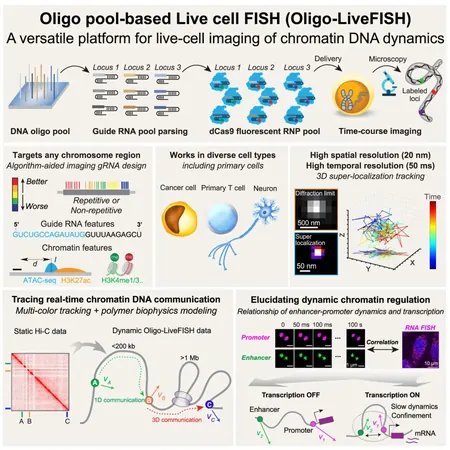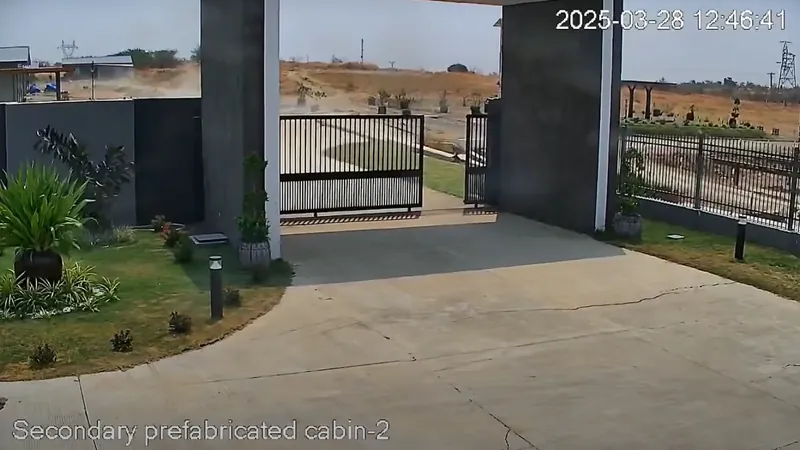
Revolutionizing Genomics: Watch Your DNA in Action Like Never Before!
2025-04-28
Author: John Tan
Unlocking the Secrets of Our DNA
Imagine your DNA as a tangled ball of yarn, containing 3 billion molecular units intricately woven together. Within this complex tapestry are genes, the coding sequences that ultimately form proteins—tiny machines performing essential tasks in our cells. The way these strands are organized can either support healthy functioning or lead to diseases, including cancer.
A Game-Changing Imaging Tool
A groundbreaking study from Stanford University, spearheaded by bioengineering expert Stanley Qi and Nobel laureate W.E. Moerner, introduces a revolutionary imaging tool that enables scientists to observe genomic dynamics in real-time. This new technology, detailed in the journal *Cell*, shines a light on previously elusive interactions within our DNA—showing just how different regions communicate over time.
Unlike past methods that provided mere snapshots of DNA activity, this tool offers a dynamic, video-like view of cellular processes. "Our work turns Instagram into YouTube," Qi remarked, emphasizing the shift from static images to vivid, moving depictions of cellular interaction.
Reassessing 'Junk DNA'
Traditionally, about 98% of our DNA was dismissed as 'junk,' thought to have no significant role. However, researchers now recognize these non-coding regions as critical software systems regulating gene expression. Qi likens them to the operating system of a computer, essential for directing cellular functions.
Molecular Mailmen: How It Works
The innovative tool employs a modified CRISPR technology that utilizes an engineered protein, dCas9, functioning as a molecular mailman. This mailman, equipped with fluorescent markers, pinpoints specific DNA locations, illuminating them for microscopic observation. To enhance visibility, multiple mailmen are deployed to create striking signals that light up the desired DNA sections.
Breaking Resolution Barriers
To overcome traditional microscopy limitations, Moerner’s techniques decode light emitted from single molecules. By incorporating an optical trick to gather depth information, the researchers achieve a comprehensive view of DNA movement—capturing all three-dimensional motions in real-time.
Capturing the Magic of Transcription
The team tested their method on regulatory regions connected to gene transcription, discovering that these areas come closer together and exhibit less movement during the process—indicating a form of cooperation. This groundbreaking insight opens up exciting new avenues for further exploration of how DNA communicates.
Applications for Health and Disease
With the ability to visualize genomic activity in living primary cells, such as neurons and immune cells, this technology holds immense potential for unraveling diseases at a cellular level. Future tests could include examining tumor biopsies, providing invaluable insights into the role of non-coding DNA in health and disease.
Collaboration Breeds Innovation
This pioneering work exemplifies the power of interdisciplinary collaboration, uniting experts from diverse fields to drive forward genetic research. As Qi states, understanding the secrets behind our DNA—previously deemed 'junk'—is essential for illuminating the pathways to future medical breakthroughs. This tool could transform genomics and open the door to revolutionary discoveries in biomedicine.
Stay tuned, as the story of our DNA unfolds like never before!



 Brasil (PT)
Brasil (PT)
 Canada (EN)
Canada (EN)
 Chile (ES)
Chile (ES)
 Česko (CS)
Česko (CS)
 대한민국 (KO)
대한민국 (KO)
 España (ES)
España (ES)
 France (FR)
France (FR)
 Hong Kong (EN)
Hong Kong (EN)
 Italia (IT)
Italia (IT)
 日本 (JA)
日本 (JA)
 Magyarország (HU)
Magyarország (HU)
 Norge (NO)
Norge (NO)
 Polska (PL)
Polska (PL)
 Schweiz (DE)
Schweiz (DE)
 Singapore (EN)
Singapore (EN)
 Sverige (SV)
Sverige (SV)
 Suomi (FI)
Suomi (FI)
 Türkiye (TR)
Türkiye (TR)
 الإمارات العربية المتحدة (AR)
الإمارات العربية المتحدة (AR)